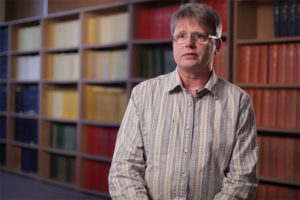X-Ray Radiation
Mysterious rays that changed the world
Can we apply Einstein’s equation in any dimension? How does black hole’s stability differ in higher dimensions? What makes four-dimensional gravity so special? Theoretical physicist Mahdi Godazgar answers all these questions.
As you increase the number of dimensions, you have more freedom and you expect a richer variety of solutions. The intuition there is very simple to explain: if you imagine, we live on the surface of a ball and we are confined to this surface, then effectively we’re living in a two-dimensional world. And, say, if we want to go from the one side of this ball to the other side, we really have to follow the surface of the ball, we have no choice, we have to go all the way around following a great circle. But if we have the access to higher dimension, then we could go through the ball and it would take about 50% less time to do that just by cutting through the middle.
In higher dimensions you can have black holes where this surface that defines the black hole, the so-called event horizon, is ringed, almost like a doughnut, or you can have black holes within black holes, say, a ring-like black hole with a spherical black hole at its centre. Or you can have a black hole which looks like a string. And, like I’ve said many other possibilities that you are not allowed to have in four dimensions.
In four dimensions, stable orbits are possible. For example, the Earth moves around the sun in the stable orbit, the moon around the Earth in the stable orbit and these are sorts of planar orbits. In higher dimensions, achieving stable orbits is very difficult and generally stable planet orbits don’t exist. And so, it is interesting that somehow Einstein’s equation is telling us that four dimensions are actually the right number of dimensions for life to exists, given that life really depends on the planet moving around the sun and so forth. Four dimensions is really a Goldilocks number. It’s not so too constrained like three dimensions where effectively there is no freedom and no dynamics, but it’s also not too free so that you just have complete chaos, many different solutions, no stable orbits and so on.

Mysterious rays that changed the world

Physicist Martin McCall on artificial materials, control over the magnetic response, and perfect lenses

Nanotechnologist Andrea Ferrari on the properties of Graphene, its significant history, and how to send it fro...